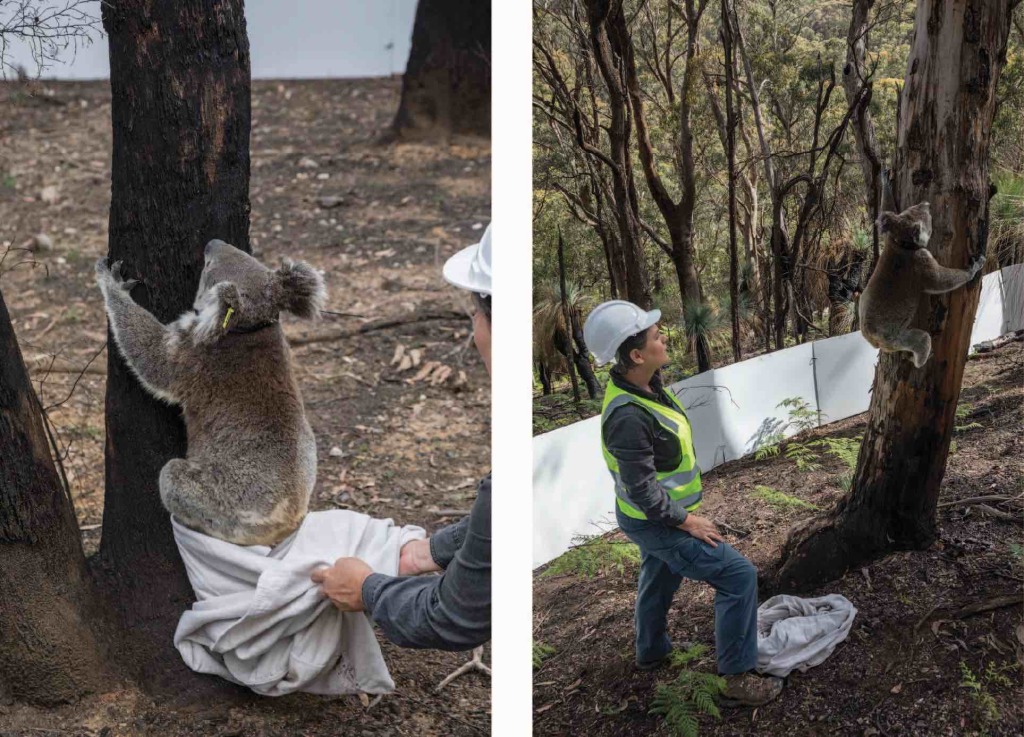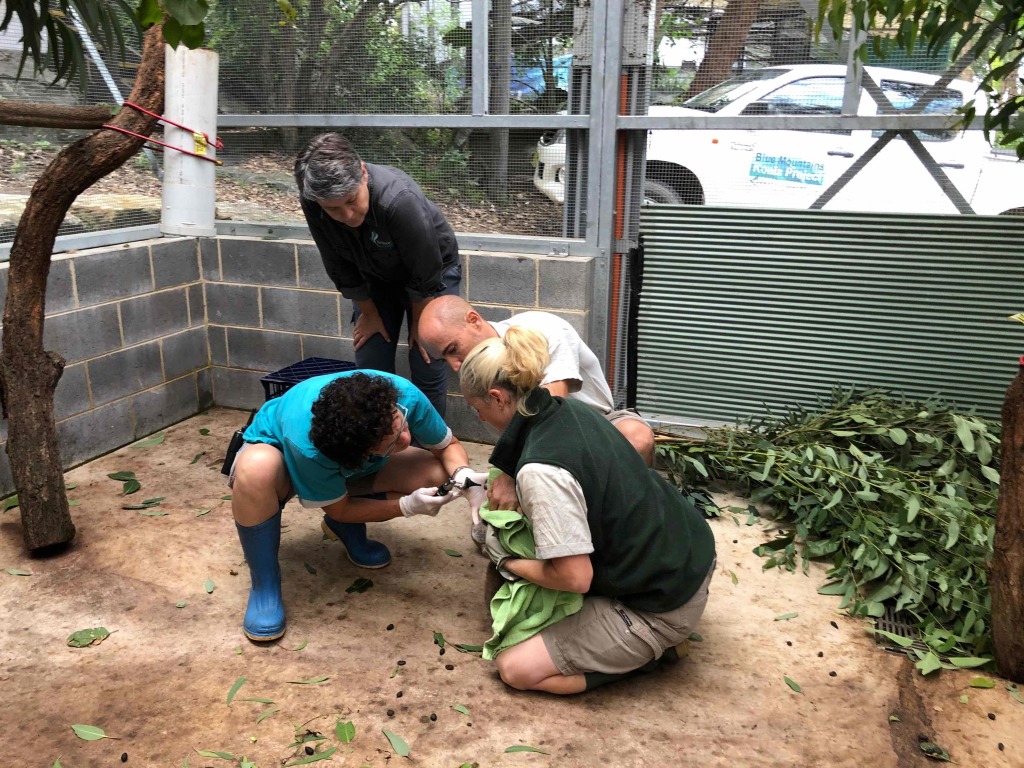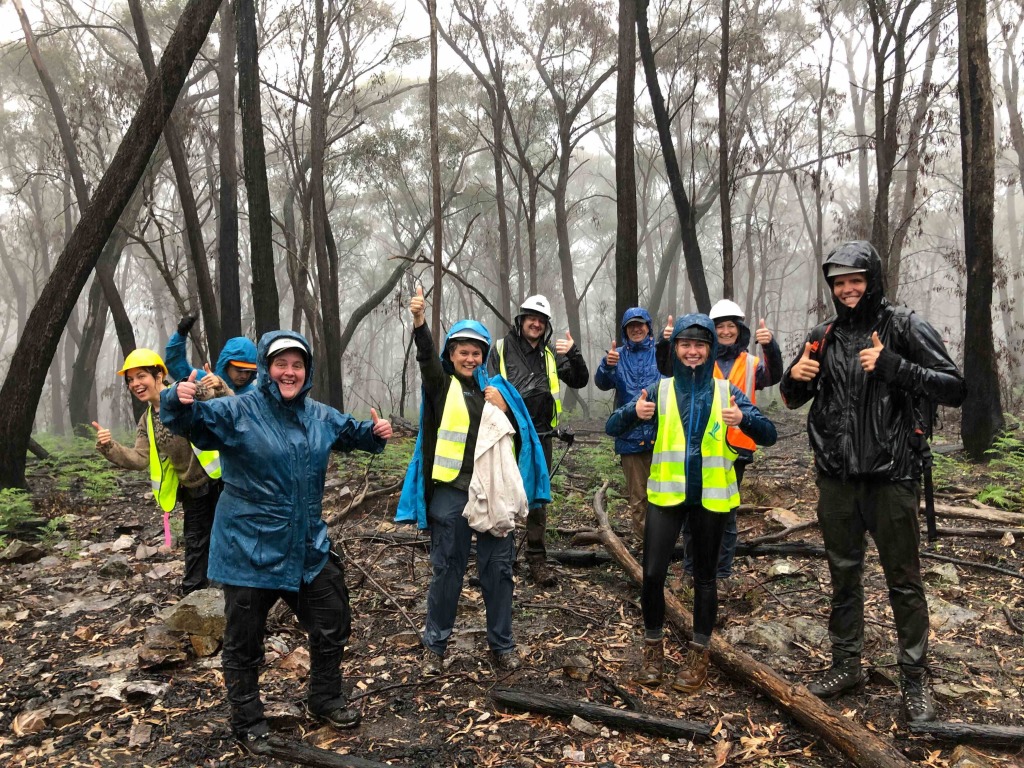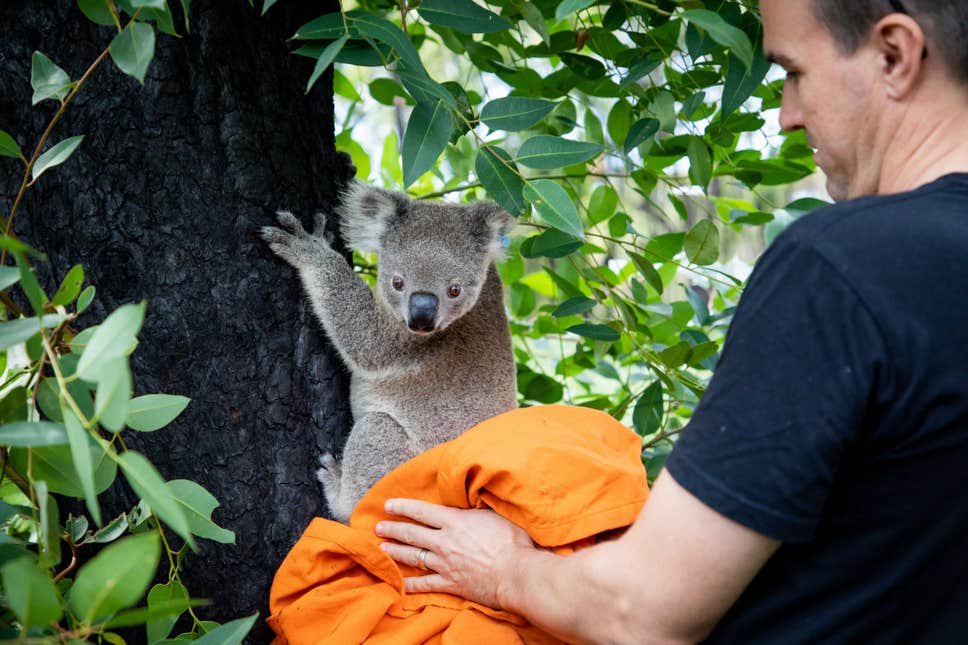
- Inspiring People -
- 6mins -
- 926 views
First Koalas rescued from bushfires returned to the wild
After unprecedented bushfires that devastated communities and iconic flora and fauna across Australia, non-profit group Science for Wildlife releases 12 koalas back into their natural habitat in the Blue Mountains.
First koalas released back into the wild after bushfire horror
Before this current global health crisis, Australia endured an unprecedented bushfire season that devastated communities and iconic flora and fauna across the country. In the midst of the horror, 12 koalas were rescued from the Kanangra Boyd National Park in the southern Blue Mountains World Heritage area. On Monday 23rd and Wednesday 25th March, they were reintroduced back into the eucalyptus forests of their Kanangra home.

On Monday 23rd and Wednesday 25th March the koalas returned home
Science for Wildlife, a not-for-profit wildlife conservation organisation based out of Sydney, Australia, recently announce that all of their koalas, saved from the recent bushfires, have been returned to their home in the Blue Mountains of Australia.
They rescued the marsupials, who are representatives of the most genetically diverse population of koalas in Australia, from the devastating mega-fire that moved through the area in December 2019. They were sheltered in safety and cared for by staff at Taronga Zoo, with a team effort between Taronga and Science for Wildlife in keeping them fed.
On Monday 23rd and Wednesday 25th March, they were reintroduced back into the eucalyptus forests by the team, with the support of San Diego Zoo Global.
“While they have coped well in care, we are delighted to finally send our koalas home. We have been busy assessing the burnt area that we rescued them from, to establish when the conditions have improved enough that the trees can support them again.” – said Dr Kellie Leigh, Executive Director of Science for Wildlife.
“The recent rains have helped and there is now plenty of new growth for them to eat, so the time is right. We will be radio-tracking them and keeping a close eye on them to make sure that they settle in ok.”
Dr. Leigh continued, “During the massive fires, as 80% of the World Heritage Area burnt, we were at risk of losing the entire koala population at this site and so that’s what drove us to try something so radical and pull these koalas out before the fire hit.”
Source: ScienceForWildlife

The animals are part of a genetically diverse koala population
The Greater Blue Mountains area is a mountainous region located in New South Wales in Australia, which supports koalas that seem to break all the rules. The region was listed as a World Heritage Area by UNESCO in 2000 largely due to an outstanding diversity of eucalypt species (over 100 species), giving koalas more choice of habitats and food trees than anywhere else in Australia.
Science for Wildlife has been running the Blue Mountains Koala Project in this region for 5 years and through collaborative research they discovered that the Blue Mountains World Heritage Region is home to the most genetically diverse population of koalas in the world. The population in Kanangra-Boyd is also free of chlamydia, which is sadly a rare thing. Science for Wildlife, along with San Diego Zoo Global*, is committing resources to help ensure that the population is recovered.
*Bringing species back from the brink of extinction is the goal of San Diego Zoo Global. A leader in global conservation, San Diego Zoo Global has been a core partner for Science for Wildlife‘s Blue Mountains Koala Project since it started and have been raising funds to support the rescue and other emergency wildlife work that Dr. Kellie Leigh and her team have been undertaking during the bushfires.
Some of the core funding provided by San Diego Zoo Global over the years has been used for ecological studies and to find, capture and radio-track koalas at the different study sites – those tracking devices are what enabled the team to go in and find the koalas and move them out before the approaching fire. The same devices, along with more support from San Diego Zoo, will now allow them to monitor the animals and ensure they settle in ok.
Source: ScienceForWildlife

What’s next for these Koalas?
The reintroduction of these koalas back to their natural habitat is just the next stage in what conservationists know will be a long-term effort to recover koala populations in the area.
“There is still a lot of work to be done to assess what is left of koalas in this region and plan for population recovery. We are dedicated to continuing to support this critical work to conserve a significant koala population.” said Paul Baribault, President and CEO of San Diego Zoo Global.
The radio-tracking devices fitted to the koalas will ensure that the Science for Wildlife team can monitor their welfare, and also learn more about how koalas use the landscape after fire. This should tell them where else they might find pockets of surviving koalas. Finally, the technology will help the Science for Wildlife team plan a future for koalas under climate change, where more frequent and intense fires are expected.
To learn more about the Blue Mountains Koala Project, visit their project page here.
For projects updates and to learn more about Science for Wildlife community, visit their projects page here, or follow them on Facebook.
Source: ScienceForWildlife

Koalas are being released in other parts of New South Wales
Koalas are also being released in other parts of New South Wales, the state where Sydney is located, reported The Independent last week.
Staff and volunteers at Port Macquarie Koala Hospital, based four hours’ drive north of Sydney, released their first koala on 2 April.
The four-year-old named Anwen was rescued in October last year, and will be the first of 26 koalas to be released into the wild by the animal hospital over the coming days.
The remaining koalas will be split into three groups and will be released back to their original habitats in Crowdy Bay (South of Port Macquarie), and two areas in the Lake Innes Nature Reserve.
Sue Ashton, president of Port Macquarie Koala Hospital, said, “This is a heart-warming day for us – to be able to release so many of our koalas back to their original habitats, even to their original tree in some cases – makes us very happy.
“Anwen was our first ever female koala to be admitted during the bushfires and her recovery has been extraordinary. It marks a proud moment for Australia; to see our Koala population and habitat starting to recover from what was such a devastating time.”
Port Macquarie Koala Hospital has also cared for koalas from Taree, the Blue Mountains and Hawkesbury. The hospital said these will be returned to their “home” areas to be released.
Source: TheIndependent

